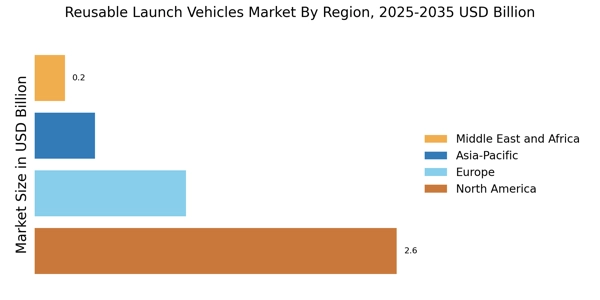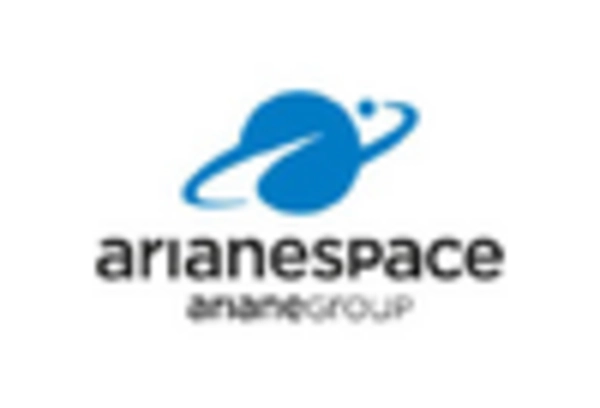Cost Reduction Initiatives
The Reusable Launch Vehicles Market is experiencing a notable shift towards cost reduction initiatives. As the demand for space access increases, companies are focusing on minimizing launch costs through the development of reusable technologies. For instance, the cost of launching payloads has decreased significantly, with estimates suggesting a reduction of up to 30% in recent years. This trend is likely to attract more commercial players into the market, thereby expanding the customer base. Furthermore, the ability to reuse launch vehicles multiple times not only lowers operational costs but also enhances the overall economic viability of space missions. As a result, the Reusable Launch Vehicles Market is poised for substantial growth, driven by the imperative to make space more accessible and affordable.
Government Support and Funding
Government support plays a crucial role in the Reusable Launch Vehicles Market. Various nations are increasingly investing in space exploration and satellite deployment, recognizing the strategic importance of space capabilities. For example, funding initiatives from government agencies have surged, with budgets for space programs reaching unprecedented levels. This financial backing is often directed towards the development of reusable launch systems, which are seen as a key to reducing costs and increasing launch frequency. The collaboration between private companies and government entities further enhances innovation in the sector. As such, the Reusable Launch Vehicles Market is likely to benefit from sustained government interest and investment, fostering an environment conducive to technological advancements and market expansion.
Increased Commercial Space Activities
The Reusable Launch Vehicles Market is benefiting from the rise in commercial space activities. With the advent of private space companies, there has been a marked increase in the number of launches, driven by commercial interests in satellite deployment, space tourism, and research missions. This burgeoning sector is projected to grow at a compound annual growth rate of over 10% in the coming years. The emphasis on reusability aligns with the commercial sector's need for cost-effective solutions, making reusable launch vehicles an attractive option. As more companies enter the market, the competitive landscape is likely to intensify, further propelling the Reusable Launch Vehicles Market towards innovation and expansion.
Advancements in Propulsion Technologies
Advancements in propulsion technologies are significantly influencing the Reusable Launch Vehicles Market. Innovations such as electric propulsion and hybrid systems are enhancing the efficiency and reliability of launch vehicles. These technological improvements not only contribute to the performance of reusable systems but also align with the industry's sustainability goals. For instance, the development of engines that can be reused multiple times without extensive refurbishment is becoming more prevalent. This trend is likely to reduce turnaround times between launches, thereby increasing the overall launch capacity. As propulsion technologies continue to evolve, the Reusable Launch Vehicles Market is expected to experience enhanced operational capabilities, attracting more stakeholders and fostering competitive dynamics.
Growing Demand for Satellite Deployment
The Reusable Launch Vehicles Market is witnessing a surge in demand for satellite deployment, driven by the increasing need for communication, navigation, and Earth observation satellites. The market for small satellites, in particular, is expanding rapidly, with projections indicating a growth rate of over 15% annually. This demand is compelling launch service providers to adopt reusable technologies to meet the rising launch frequency and reduce costs. As more countries and private entities seek to establish their satellite constellations, the reliance on reusable launch vehicles is expected to grow. Consequently, the Reusable Launch Vehicles Market is likely to see a significant uptick in activity, as companies strive to capitalize on this burgeoning demand for satellite services.


















Leave a Comment